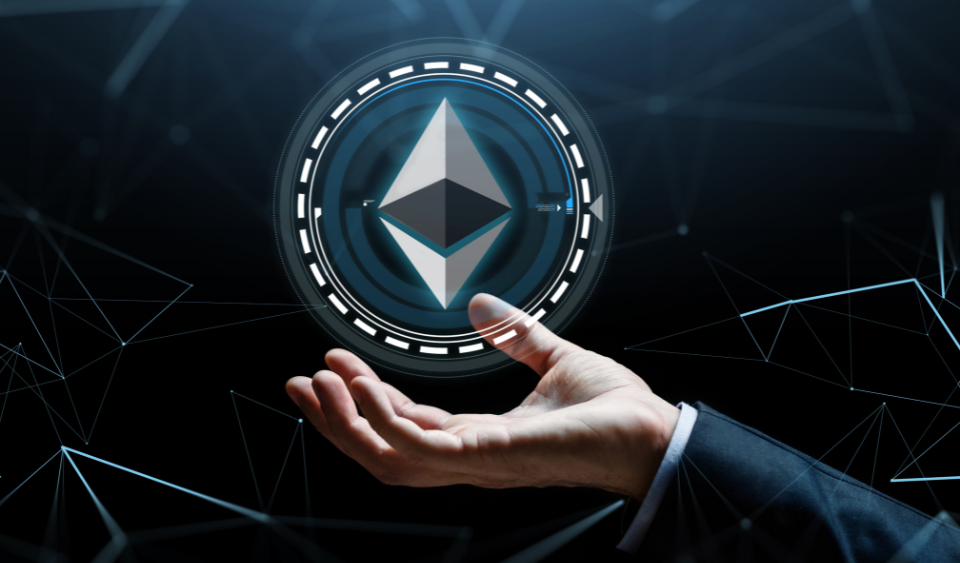The metaverse and blockchain: the reality of virtual worlds

The “metaverse” was popularised in the 1990s by Neal Stephenson’s science fiction novel “Snow Crash.” In the novel, a pair of delivery drivers travel the metaverse in a bid to escape a capitalist dystopia. But with Mark Zuckerberg announcing Facebook’s rebranding to Meta Platforms, science fiction is about to become science fact. Zuckerberg is seeking to promote virtual workspaces in the metaverse that increase the opportunities for collaboration, productivity, and gamification.
The metaverse is a virtual reality (VR) world within which participants interact using VR-enabled devices. As such, metaverses are immersive virtual worlds, harbouring immense social and economic potential. Non-fungible tokens (NFTs) that virtualise almost any asset are already disrupting large swathes of the economy. The blockchain technology that powers these NFTs makes it possible to convert these virtual assets into real economic value.
With the combination of the immersive environment found in virtual reality, the engagement factor found in video games, the interactivity found in social media, and the value exchange capability found in blockchain powered networks, the metaverse is primed to drive the next internet revolution.
What is the metaverse?
In 2018, Warner Brothers released the screen adaptation of Ernest Cline’s novel “Ready Player One.” In the story, James Halliday designs a virtual world within which he hides the keys to his fortune. Any player is free to accept his challenge and recover the fortune after his death.
The metaverse is a superset of virtual reality and the internet. It spans virtual and physical worlds and powers entire economies, allowing users to visit virtual places using avatars. It’s almost like a gigantic virtual theme park, within which users move seamlessly and interact.
The tokenisation of assets
The early versions of the internet were little more than digitised versions of magazines. Fast forward to today, and non-fungible tokens (NFTs) are digitised versions of almost any asset imaginable. You can create a beautiful painting, but you can also sell it (or a portion of it) as digital tokens (NFTs). You can package these tokens any way you see fit. Thus, you are in total control of the value creation chain surrounding your assets.
Contrast this with how large sectors of the digital economy operate today. Say you create content on Facebook or YouTube and generate a huge list of followers. The bulk of the value you create is retained by these platforms, either through the fees they charge you to participate on their platform, or the traffic you generate on their platform. NFTs shift this balance of power back into the hands of creators who are able to tailor unique experiences for their audiences.
Multiplayer online games involving hundreds, even thousands, of players interacting in a metaverse-like environment have been around for a while. However, the integration of blockchain powered NFTs and virtual reality platforms has generated real economic value in the form of assets and experiences. In the metaverse, assets are represented by various types of tokens and their ownership is recorded on the blockchain. These assets can also be exchanged for other digital assets such as bitcoin through decentralised exchanges.
So, in a metaverse powered economy, creators are still able to create value on platforms such as Facebook, but without being locked in. They are able to transfer that value away from these platforms in the form of NFTs. Unsurprisingly, the major corporations, which have long been the centres of value creation, are taking note.
The world-renowned auction house Sotheby’s, for example, opened a digital replica of its London HQ in the blockchain-based virtual world Decentraland. It boasts a virtual gallery which visitors can browse. Facebook, too, is taking note. Much like it is the de facto place where people socialise online today, it wants to be the place where people meet, buy, sell, and interact online in the future. Facebook has rebranded as Meta, whose vision is to help bring the metaverse to life.
From Facebook to Meta
In June 2021, Mark Zuckerberg told his employees they’d be working to “help bring the metaverse to life.” He formed a team of top executives to drive the project, including Vishal Shah at Instagram and Vivek Sharma at Facebook Gaming. In an interview with CNET he said:
“We want to get as many people as possible to be able to experience virtual reality and be able to jump into the metaverse and have social experiences within that.”
Facebook owns Oculus, maker of the Quest VR headset. It’s promoting these headsets as a means to explore the virtual world it calls Horizon Worlds.
But Zuckerberg does not view Horizon Worlds as just Facebook 3.0. For him, it’s a complete economic system that will redress social inequalities. Thus, it opens up economic opportunities to all, through virtual collaboration opportunities, regardless of geographical location.
Why the metaverse matters
The metaverse could literally become its own industry. A go-to place for work, commerce, entertainment, and other social activities. It’s even been described as a successor to the internet. Venture capitalist Matthew Ball describes it as “the gateway to most digital experiences, a key component of all physical ones, and the next great labor platform.”
The metaverse will reshape the creator economy, opening up opportunities to creators, innovators, entrepreneurs, artists, and others through blockchain powered NFTs and other decentralised applications. It may even lead to the complete disappearance of incumbent industry leaders.
The components of the metaverse
The metaverse is set to spawn a new economy powered by blockchain and virtual reality. As such, the following components are needed to make it work:
The internet. It may be stating the obvious, but the open communications network offered by the internet will provide the infrastructure for transparent communication and trade needed in the metaverse.
Open media standards. Open media standards will allow interoperability of video, audio, text, and new forms of media. Nvidia’s Material Definition Language, for example, gives developers the freedom to share physically based materials between supporting applications. Jensen Huang, CEO, says “We’ll be able to almost feel like we’re there with each other.”
Open programming standards. The metaverse will need open programming standards that facilitate the interoperability of scripts. The Universal Scene Description (USD) language developed at Pixar Studios is a perfect example. It is the HTML of 3D and is the foundation for sharing different types of images from multiple sources.
Virtual Reality (VR) hardware. VR hardware will provide an interface between the “real” physical world and the virtual metaverse world. These include VR headsets and smart glasses.
Blockchain. Blockchain is a decentralised ledger technology (DLT). It stores transactions in a decentralised database on a peer-to-peer network while also ensuring their authenticity. It also automates business rules via smart contracts. It’s an essential component of permissionless value-based transactions.
Decentralisation. Decentralisation is a feature which both follows from and is underpinned by blockchain technology. A metaverse must not be controlled by any single authority. Therein lies its value. Therefore, the metaverse must be equally accessible to all participants.
User governance rules. User governance rules follow from decentralisation. In a decentralised metaverse, business models such as blockchain-enabled decentralised autonomous organisations (DAOs) can give users equal governing rights in the operation of the metaverse.
Asset ownership rules. In a metaverse where users share equal governance rights, there needs to be some transparent means to prove asset ownership. Digital tokens, such as NFTs, which are stored and traded on the blockchain, are the ideal vehicle. Also, metaverse tokens can be easily traded on NFT marketplaces and decentralised exchanges, providing a vehicle for the transfer of economic value.
High-speed exchanges. High-speed exchanges that deliver financial services, permissionless commerce, and the exchange of value will underpin the growth of the metaverse. Data will have to be stored and served to millions of users via a secure and transparent blockchain infrastructure.
Decentraland, for example, is a 3D virtual world built on the Ethereum blockchain. In Decentraland, users have 90,000+ parcels of LAND to choose from. A LAND is an NFT and users have a choice of what they wish to publish on their LAND. Users can purchase LAND, or other goods and services, using MANA, Decentraland’s own cryptocurrency. In short, Decentraland is a complete virtual economy supported by high-speed exchanges. Users can engage in a limitless number of transactions. Its digital currency, MANA, can be exchanged for regular currency or traded for other cryptocurrencies.
Real-world examples of virtual worlds
Although the principles of the metaverse promote decentralised governance, the big tech giants are the ones leading its development. The XR Association was founded by Google, HTC, Microsoft, Facebook, and Sony. It aims to promote development of virtual reality, augmented reality, mixed-reality, and future immersive technologies.
Gaming is leading the way in the development of the metaverse. Gamers are used to the concept of in-game economies, where they can buy and sell virtual goods. However, the metaverse seeks to integrate these in-game economies into a wider virtual experience where the objective is not simply to win games but to build economic value.
So the metaverse opens up real economic and social opportunities for the future. It offers users the opportunity to play, interact, invest, and trade in almost limitless ways. It’s this ability to integrate various ecosystems which transforms the metaverse into what has been called the next generation of the internet.
Let’s now turn our attention to some companies that are building the products that will pave the way to a fully functioning metaverse.
Roblox Corporation. Roblox Corporation started life as educational software company Knowledge Revolution in 1989. Roblox, the video game, was released in 2006. The corporation styles itself as “the architects of play.” It seeks to empower its over 9 million developers with tools to create digital worlds where users can learn, work, and play. It has so far generated over $760 million of earnings for its developers.
Epic Games. Epic Games is the developer of the Unreal Engine. This commercially available game engine, which powers games such as Fortnite and Gears of War, was once dubbed the most successful video game engine by Guinness World Records. In April 2021, Epic Games completed a $1 billion round of funding to support its long-term vision of the metaverse. Tim Sweeney, the company’s founder and CEO, believes that the way the internet operates is dated. He defines the metaverse as a digital space where users interact with brands and with each other. He sees the metaverse as breaking down barriers where users do not have separate Facebook, YouTube… accounts but where everything connects seamlessly in one digital economy.
Microsoft. Even though Microsoft is well known for Xbox and Minecraft, it has made giant leaps towards metaverse applications for the enterprise. At the company’s Ignite 2021 conference, it announced its bid to integrate the metaverse into its existing applications and software. The Microsoft enterprise metaverse will feature AI-enabled avatars and immersive workspaces. Microsoft Dynamics 365 Connected Spaces, for example, will let companies recreate immersive workspaces that enable virtual meetings. Its video-conferencing application, Teams, will also enable immersive virtual meetings. In these meetings, avatars will be able to synchronise their lip movements and mimic the hand and facial gestures of their users.
Microsoft Mesh is a technology that integrates mixed reality applications. It will also be integrated into Teams. It will power Microsoft’s own HoloLens 2 VR headset, as well as Mesh-enabled smartphones, tablets, and computers. Microsoft has a solid track record of investment in VR applications. SharePoint Spaces, for example, allows users to create and interact with mixed reality 3D spaces within which they can visualise data models. Azure Digital Twin, an offshoot of its cloud offering Azure, enables the recreation of real-world physical spaces.
Nvidia. Nvidia, well known for its powerful graphic processing units (GPUs), is another tech giant jumping on the metaverse bandwagon. It calls its unique version of the metaverse, “an omniverse”, a metaverse for engineers in which engineers can work on their designs in a virtual environment that obeys the laws of physics.
Nvidia had already been working on its Holodeck project for a number of years, inspired by Star Trek’s virtual reality simulator. They widened the project’s scope by building on the Universal Scene Description (USD) technology developed by Pixar Studios. Because the omniverse obeys the laws of physics, engineers can simulate real-world scenarios that would otherwise be impossible or dangerous to test in the real world. Self-driving cars, for example, could not be tested in densely populated urban environments. In another example, the German car manufacturer BMW is using the omniverse to recreate an entire car factory before committing to building it.
Autodesk. Autodesk is a software corporation that develops 3D animation tools for architecture, engineering, entertainment, and other industries. In a move that reflects Nvidia’s partnership with Pixar, it has teamed up with Weta Digital to launch WetaM, a cloud-based animation software. Weta Digital is the winner of 13 Academy Sci-Tech Awards for its software applications that helped bring to life movies such as Avatar and the Lord of the Rings. Autodesk and Weta Digital wish to democratise the creation of art and special effects, thus opening up the possibilities for endless virtual worlds in gaming and entertainment.
Amazon. Although the retail giant has not set out its stall in the metaverse in any significant way yet, it’s highly likely that Amazon’s extensive cloud infrastructure (marketed as Amazon Web Services) will power rich metaverse experiences in the future. Its Echo hardware and Alexa virtual assistant could also help its millions of daily shoppers experience the Amazon platform in a completely new way.
CyberDeck. CyberDeck is a video game which tells a compelling narrative inspired by the cypherpunk movement. A cypherpunk is an individual who promotes social and political change through the widespread adoption of cryptography. It’s an ideal which traces back to the American cryptographer David Chaum who is widely credited with the invention of digital cash. Bruce Sterling, science fiction author and founder of the cypherpunk movement, provides the dystopian narrative behind the CyberDeck game. In CyberDeck, the characters are ordinary individuals seeking to reinvent themselves. This is a direct play on current trends in business and politics where the blockchain, and issues of decentralisation, are highlighting pressing governance and privacy issues in modern society.
Final thoughts
In the 20 years or so since the emergence of the modern internet, and especially since the revolution precipitated by the global COVID 19 pandemic, we may have reached a crossroads. The internet is no longer just a nice to have but an essential part of our daily lives. We rely on it for socialising, shopping, working, and communicating. But, as Tim Sweeney puts it, the internet may be broken. And, in his own words, “This metaverse is going to be far more pervasive and powerful than anything else.”
Contacts:
+39 02 45391390




